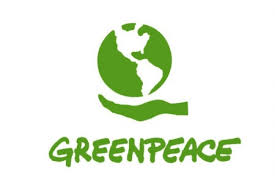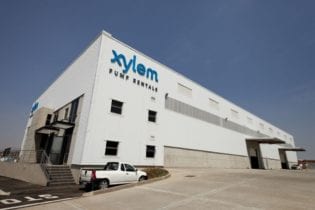While the concept of extracting energy from organic waste is definitely not something new, most people are of the assumption that these bio-energy solutions are only reserved for large refuse dumps and industrial-sized companies. This is not true.
Transforming waste into energy, savings and income by Jonathan de Magalhães* Biogas is a combination of mostly methane (CH4) and carbon dioxide (CO2), and is created in the process of anaerobic digestion, which is the fermentation of organic matter in the absence of oxygen. Simply put, a biogas digester is a water-tight tank which is fed with organic waste. And the scope for usable organic waste is huge: food and table waste, animal manure, animal fat and blood from abattoirs, sewerage and even grass cuttings are all perfect candidates for biogas generation, to name but a few. Once the organic waste enters the digester, the organic material starts to break-down through the fermentation process and biogas is generated. The digester tank, filled with water, provides the perfect anaerobic conditions required for this process to naturally occur. A biogas digester is also a ‘live’ and adaptable system. This means that the amount of biogas generated varies based on the amount of organic material entered into it, and therefore the yield can also be manipulated to a certain degree by adding a different type of organic waste to affect the biogas yield. The organic waste ferments over a period of time, which could be as short as only a few days or up to a month or two. As new organic waste is added to the digester, the older and spent waste is removed, normally at the other end of the digester. This organic slurry which exits the digester usually has little or no smell, and is a 100% natural organic fertiliser, which can then be used as compost to fertilise crops, trees or flower beds. And government support? Unlike some renewable bio-energy technologies which are fairly new, a quick Internet search confirms that biogas digesters have in fact been around for over 150 years. The first biogas digester was built in Bombay, India, in 1859 at a leper colony. Currently, it is estimated that there are around 2 million biogas digesters in operation in India, while China supersedes that amount with a staggering 6 million digesters estimated to have been installed by 1970. And yet, the idea of easily converting organic waste to usable renewable energy is virtually unknown in South Africa. Even other African countries, such as Kenya, Tanzania and to a lesser extent Botswana, all have active governmental assistance programmes in place to assist in the easy deployment of biogas digesters. In fact, right now there are more biogas digesters installed in Lesotho than there are in South Africa! In South Africa, the assistance for any individuals, companies or communities wanting to take advantage of a waste-to-energy digester has been largely ignored by government. As Mark Tiepelt from Biogas SA observed, “large scale commercial biogas digesters have huge potential, but the best and most effective and highest impact way to establish biogas as a viable sustainable alternative source of energy is to support its application of waste-to-energy in whatever way on farms”. So basically put, don’t expect any financial assistance from the government in the form of a REFIT (renewable energy feed-in tariff) or IPP (independent power producer) agreement. Great potentialIsn’t it ironic then that the first large-scale biogas digester privately built to generate biogas was done by South African pig farmer L. John Fry, in the mid-1950s. Known worldwide, his agricultural digester ran a bi-fuel generator on biogas for six years non-stop before he moved to the United Kingdom.But the good news is that, even without any financial assistance, biogas still has huge potential as being a very viable solution, showing great cost payback periods for environments with suitable quantities of organic waste available. The biogas that is produced can also be used for a number of different applications as well. Burning the gas for heating is the most efficient way of using biogas. Heating could be a normal requirement, such as space heating for ambient temperature control (crucial for chicken farming in the winter), as well as water heating. By using a biogas water heater it is possible to provide instant hot water using nothing more than your organic waste. Using biogas stoves, rice cookers and other biogas appliances that are readily available enables normal food cooking to be done running solely off biogas. Lighting can also be provided, using biogas lights that work in exactly the same way as a camping gas light.
Energy efficiency While it’s not the most efficient way of using biogas, running a biogas generator can also generate electricity. However, the comment of low efficiency does need to be looked at in the correct context though, as using free and abundant biogas to generate electricity has many advantages, regardless of the efficiency process when running it through a biogas generator. It was in fact these advantages that took centre stage at the Bio-Energy session at the Africa Energy Indaba 2012, recently held in Sandton, Gauteng. The indaba was a platform for energy stakeholders, solution providers and professionals to get together and look at the solutions available to assist countries and projects throughout Africa who are facing various energy challenges. Biogas specialist, Jan du Preez, who was at the Africa Energy Indaba, also commented on the environmental impact of biogas digesters noting, “currently there is very little precedence for EIA (environmental impact assessment) studies for biogas digesters in South Africa. If the digester is to treat manure, sewerage and energy crops, only a basic EIA is required, provided the generation capacity is less than 10MW and the land area used is less than 1ha. However, if the digester is to treat other wastes such as the putrescible animal wastes from abattoirs, then a full EIA may be required, regardless of the size of the biogas digester”. So while deploying a biogas solution can be done relatively quickly, it is possible that the environmental impact studies required could take some careful planning into the roll-out schedule. No such thing as trash One of the main advantages of a biogas system is that the same organic waste that is usually subject to strict health and safety procedures can now be used to generate free energy. Even less problematic waste, such as food waste and garden refuse, can now be used for biogas generation and does not contribute to landfill space or incur the costs of transporting this waste to the dump. For new developments, or where a septic tank system is used, sewerage can be routed directly into the biogas digester. Besides providing additional organic waste for biogas generation, using sewerage has the benefit of providing most of the water required for the biogas digester to function correctly. Additional benefits also include not burdening the existing sewerage infrastructure system, as all sewerage can now be naturally processed on site while generating biogas at the same time. After the biogas has been generated, the organic slurry produced by the digester also has a commercial value as an organic compost and fertiliser. This can either be used on site if the installation is on an agricultural holding, or it can be sold either in its wet form or as dry pellets to farms requiring fertilisers. Therefore, a biogas solution offers the advantages of taking freely available, and sometimes problematic, organic waste to generate energy, reduce existing energy costs in an environment, and provide an additional revenue stream in the form of creating natural fertilisers, making the use of biogas a win-Win-win solution. There is energy in waste. And a lot of it too!





